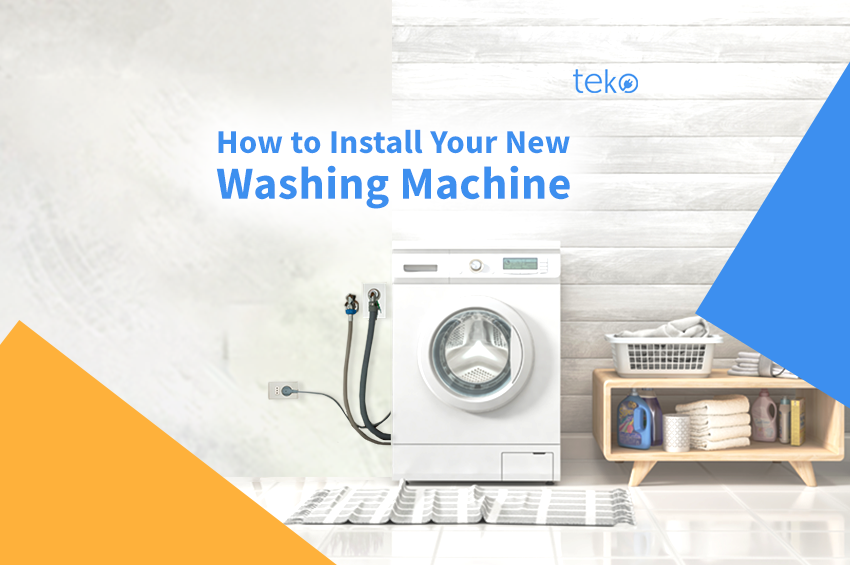
Most washing machines are easy to install, as they’re generally plug-and-play. Still, there are steps and guidelines worth noting to make sure your device lasts long and you’ll be able to use it with ease. Here’s a quick guide for you:
1. Find the ideal spot.
Depending on your living environment, you may be limited in your options for where to put a washing machine. However, it would help if you pick a location that will minimize the possibility of unequal loads, leaks, and possible damage to your appliance or residence. It is also necessary to have access to hot and cold water, a drain, and an electrical outlet to handle your washer and dryer, depending on the type of machine.
2. Measure the spot to ensure a proper fit.
Because washing machines come in various forms and sizes, you may need to take measurements to guarantee that yours will fit in the location you want to use them. For it to reach its intended place, you also need to measure the doorways it will have to pass through. Remember to measure the width and depth of both the washing machine and the space to guarantee a perfect fit. To avoid fitting issues, take keen notes of the actual dimensions of the machine before making a purchase.
3. Make necessary adjustments to the leveling feet.
The leveling feet are the little legs that go below the appliance. Remember to calibrate and adjust these to ensure that your washing machine is as level as possible. Twisting the leveling feet clockwise lowers the washer’s corner while turning them counterclockwise raises it. If you have one, place a carpenter’s level on top of the appliance and, as needed, twist the feet at the bottom of each corner until the level reflects an even surface. Remember to level the washer from left to right and front to rear since it must be level in both directions.
4. Attach the water supply hose to the faucet.
You may simply connect the hoses here if you have pipes that lead to your washing machine’s location. Ensure your water connections are tightly tightened but not overtightened to avoid leaks. These connections may generally be made tight enough with just your hands. You can purchase a longer hose designed to resist higher pressure if the pipe is too short. Never attempt to extend the hose since it may break.
5. Connect the drain hose to the drain.
To avoid leaks, the drain pipe must fit appropriately. You may feed the drain hose over the side and into the sink if your washer is near a sink. You may need to utilize a standpipe if you don’t have a drain or sink basin near the washer. If the pipe is not securely fastened, it may get loose over time, resulting in floods.
6. Perform a trial run.
It would be best if you did a load of laundry once your washer is connected. However, rather than filling your clothes and leaving them unattended, it’s essential to keep a careful eye on them for the first few loads to make sure there are no leaks.
Wait near the washer and look under, behind, and around it. Tighten all the connections surrounding the leak if you notice any symptoms of leaking, but don’t overtighten. Turn off the washer and call a professional plumber to examine your pipes and connections if it continues to leak.
Conclusion:
Installing a new washing machine can be an intimidating task for some, and it’s important to feel confident that you’re doing the job well and without errors. If you follow the tips outlined above, your new appliance will work just as fine.
If you need more information on washing machines, from the types of washing machines, where to buy them, and how to use them, check out our Ultimate Guide here!

